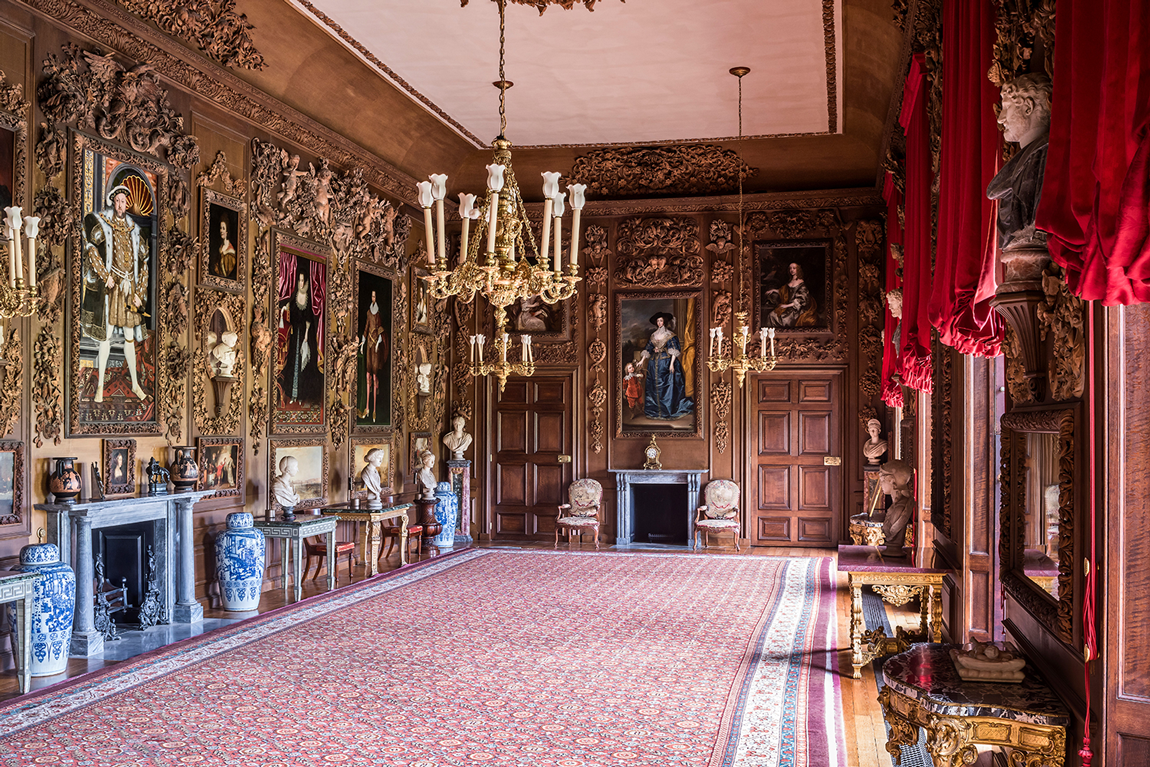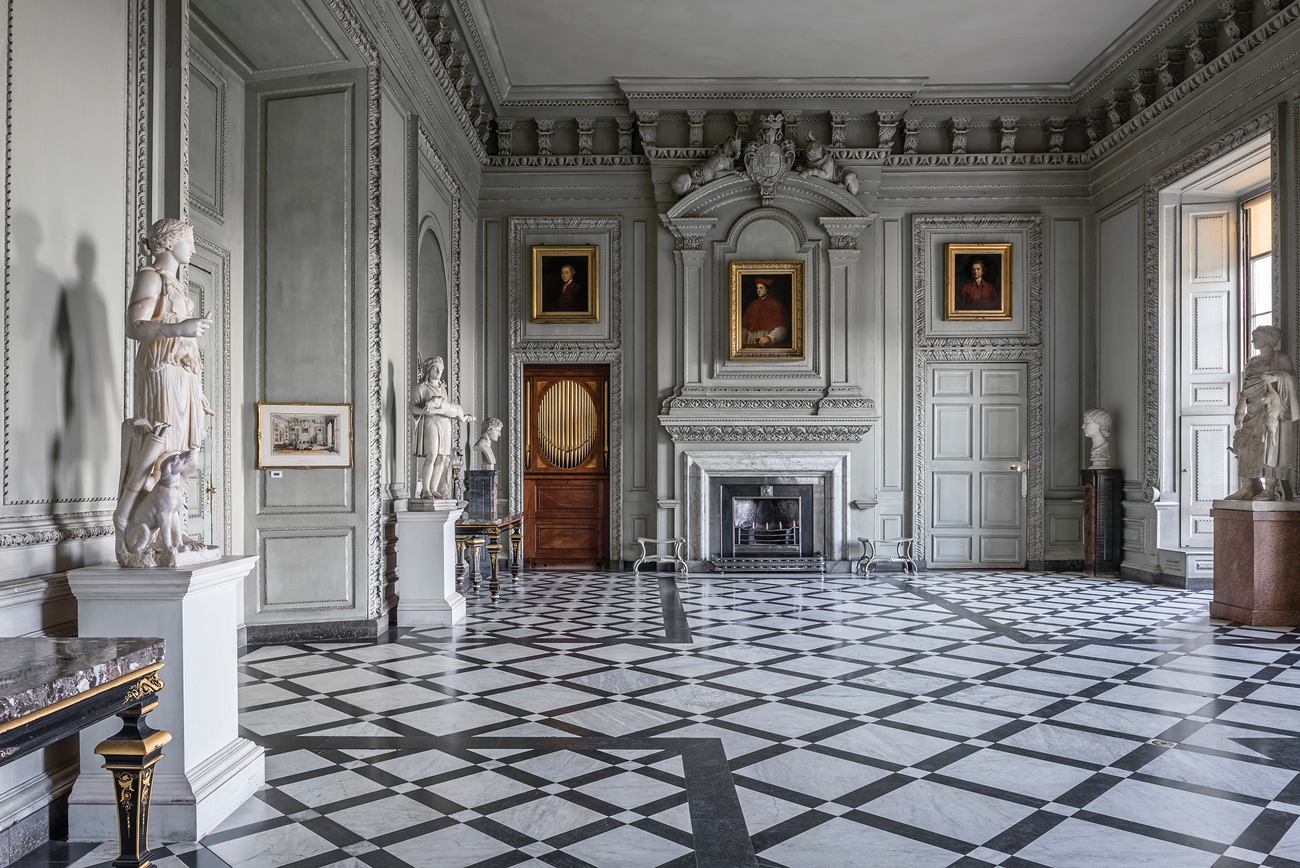
This week I am returning with you to Petworth. The artist John Constable famously called Petworth ‘the house of art’ and it still has the National Trust’s finest collections of pictures and sculpture.
Horace Walpole described Grinling Gibbons original Carved Room at Petworth as ‘the most superb monument of his skill’. Grinling Gibbons is acknowledged as the leading English Baroque sculptor. The room was about half its current size when Gibbons constructed it around 1690 for the 6th Duke of Somerset (the ‘Proud Duke’).
There was a marked revival of interest in Grinling Gibbons work in the early 19th century. In 1786 the 3rd Earl of Egremont decided to enlarge the Carved Room. He doubled its size to create a Dining Room large enough for banquets.
Gibbons intended that his limewood carvings be lighter than the oak panelling to which they were pinned, rather as they are displayed today. Grinling Gibbons’ still life compositions in carved wood with their Baroque garlands, birds, musical instruments and cherubs surrounding the four full-length portraits in the Carved Room are exquisitely conceived.
Not all of the carvings are by Gibbons and his workshop. Some, including the frame which holds the portrait of Henry VIII after Hans Holbein the Younger you see here were carved by John Selden.
The 3rd Earl employed the carver John Ritson who added numerous carvings in the style of Gibbons to the decorative scheme.
The 3rd Earl also had the oak panelling painted white reversing the effect conceived by Gibbons a century earlier.
It was at this time that JMW Turner’s four landscapes of Petworth and Sussex were installed. You can glimpse Turner’s ‘Brighton from the Sea’ and ‘The Lake in Petworth Park’ beyond the fireplace. Their palette must have been dramatic against the white panelling.
The room was again altered in the later 19th century and the white paint removed from the oak panelling. It was not until 2002 that the Carved Room was restored to the 3rd Earl’s scheme by the National Trust. The oak panelling was kept as Grinling Gibbons had originally intended.
The exceptional Chinese Kangxi period blue and white vases and covers date from around 1690, the period Grinling Gibbons was working at Petworth. They were probably purchased by Elizabeth, the Duchess of Somerset, the Proud Duke’s wife and Percy heiress. Elizabeth was an avid collector of Chinese blue and white porcelain, a passion she shared with her friend, Queen Anne.
The Carved Room at Petworth is amongst the finest examples of the grand English Country House interior. Its layered and eclectic giving voice to Petworth’s reputation as ‘the house of art’. It reflects the patronage, stories and interests of a family over generations.
The National Trust’s work at Petworth, under the leadership of Andrew Loukes, is cause for celebration as the trust marks its 125th anniversary.


